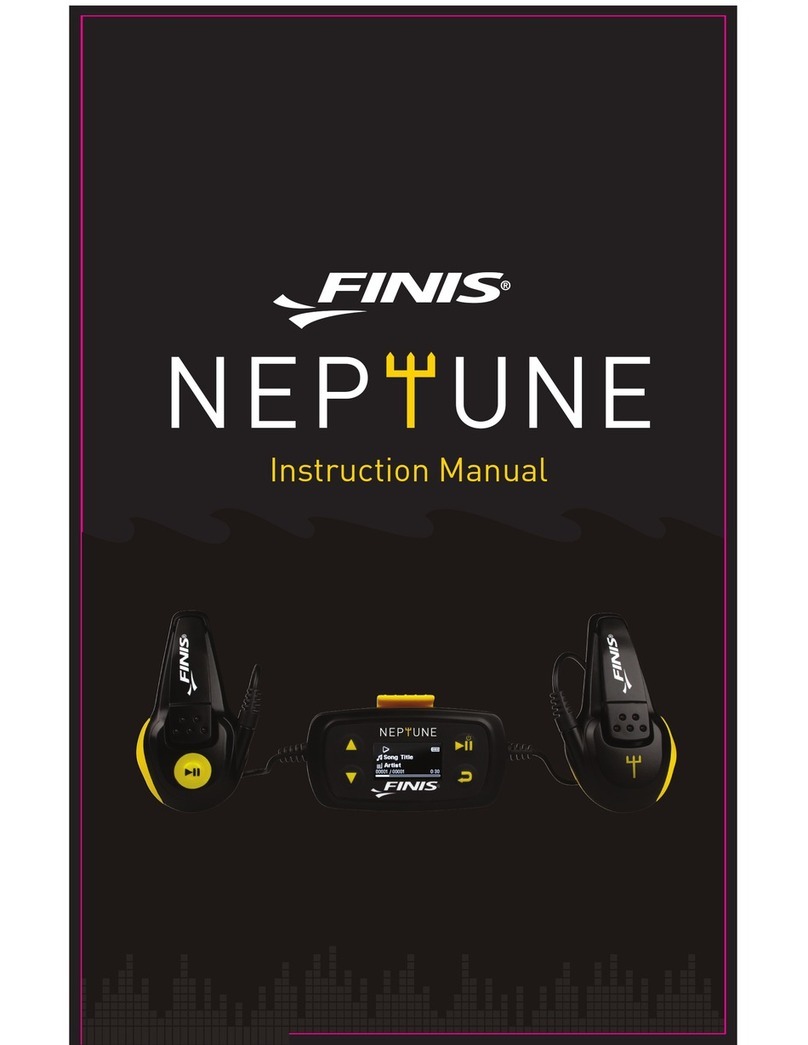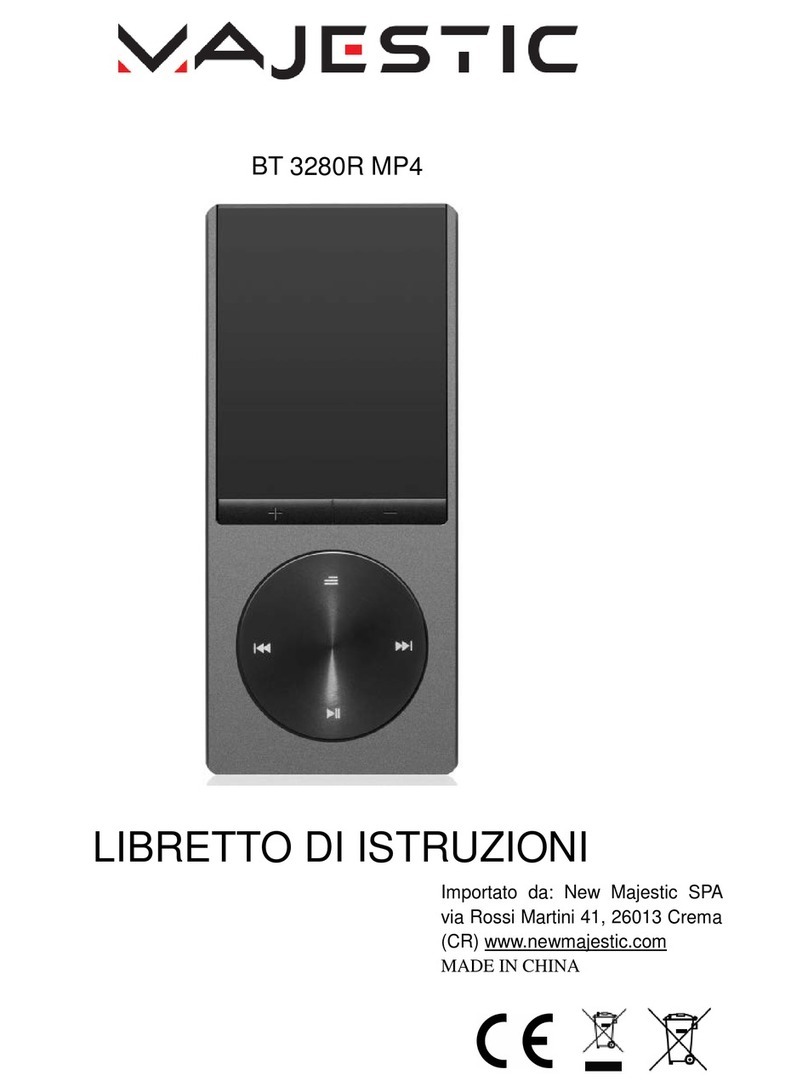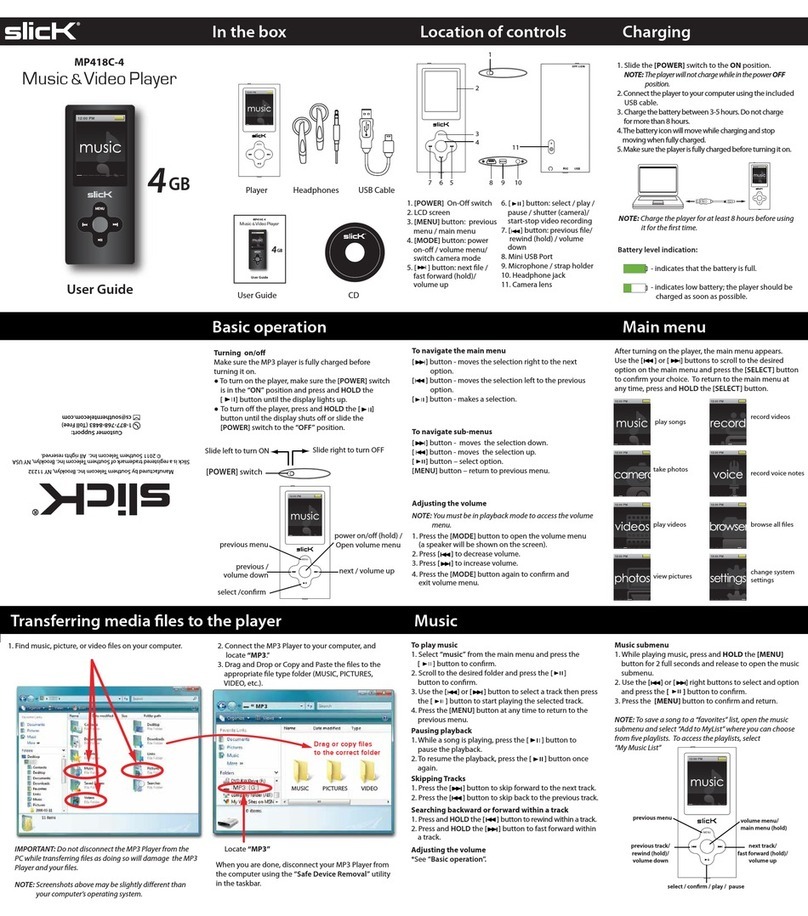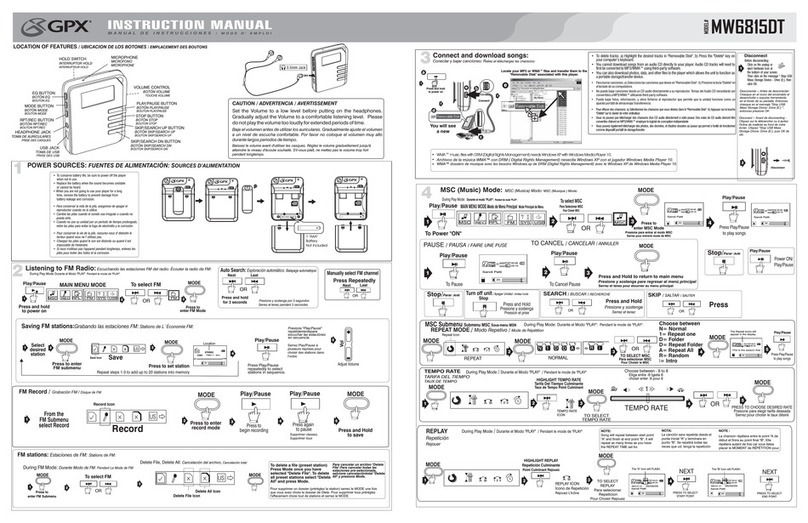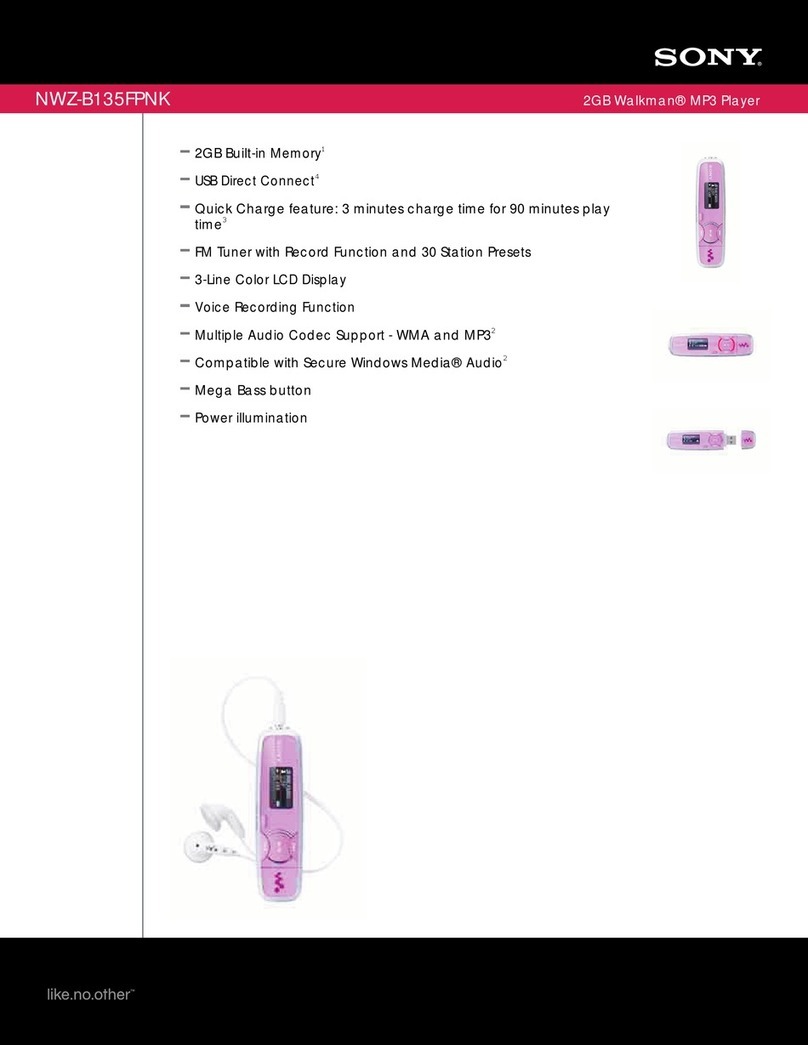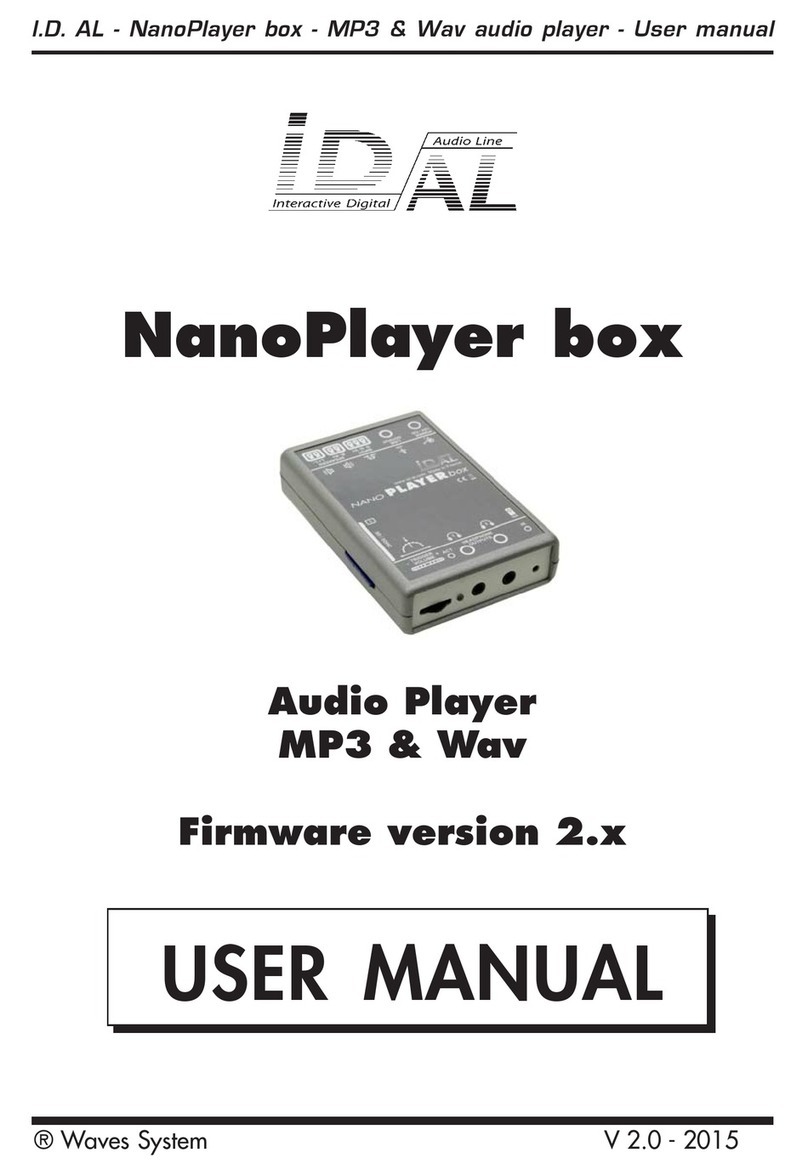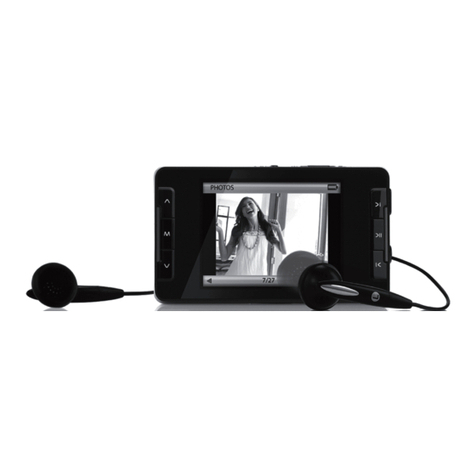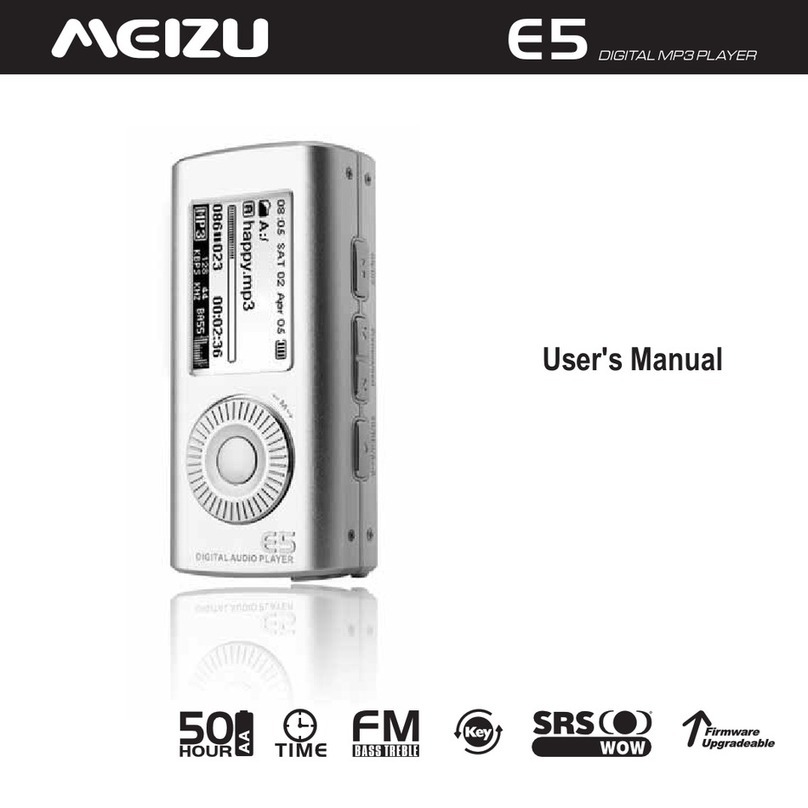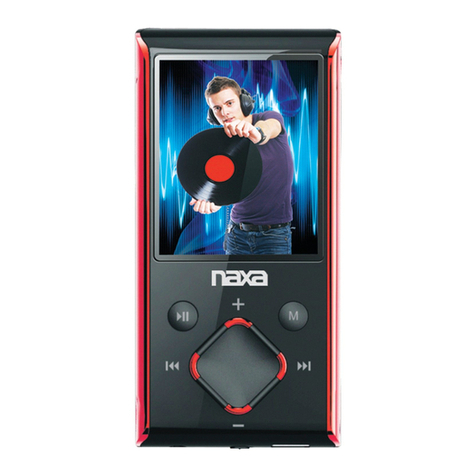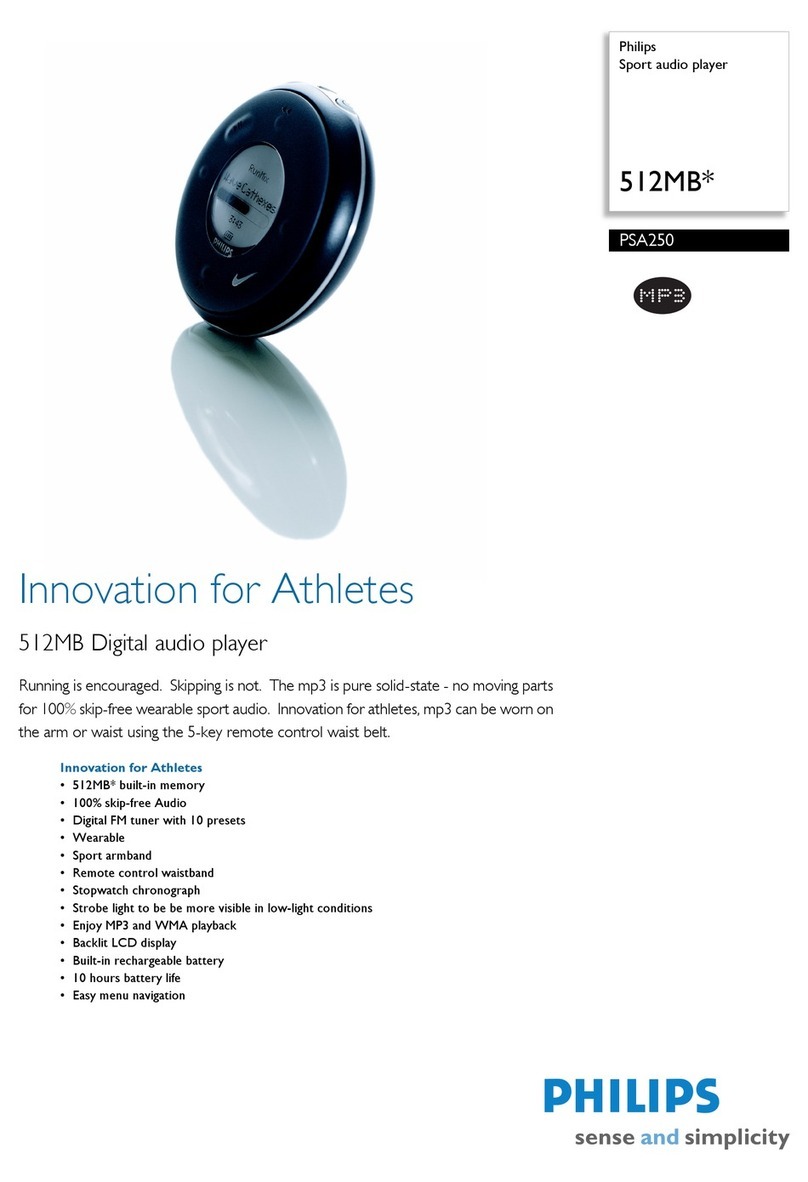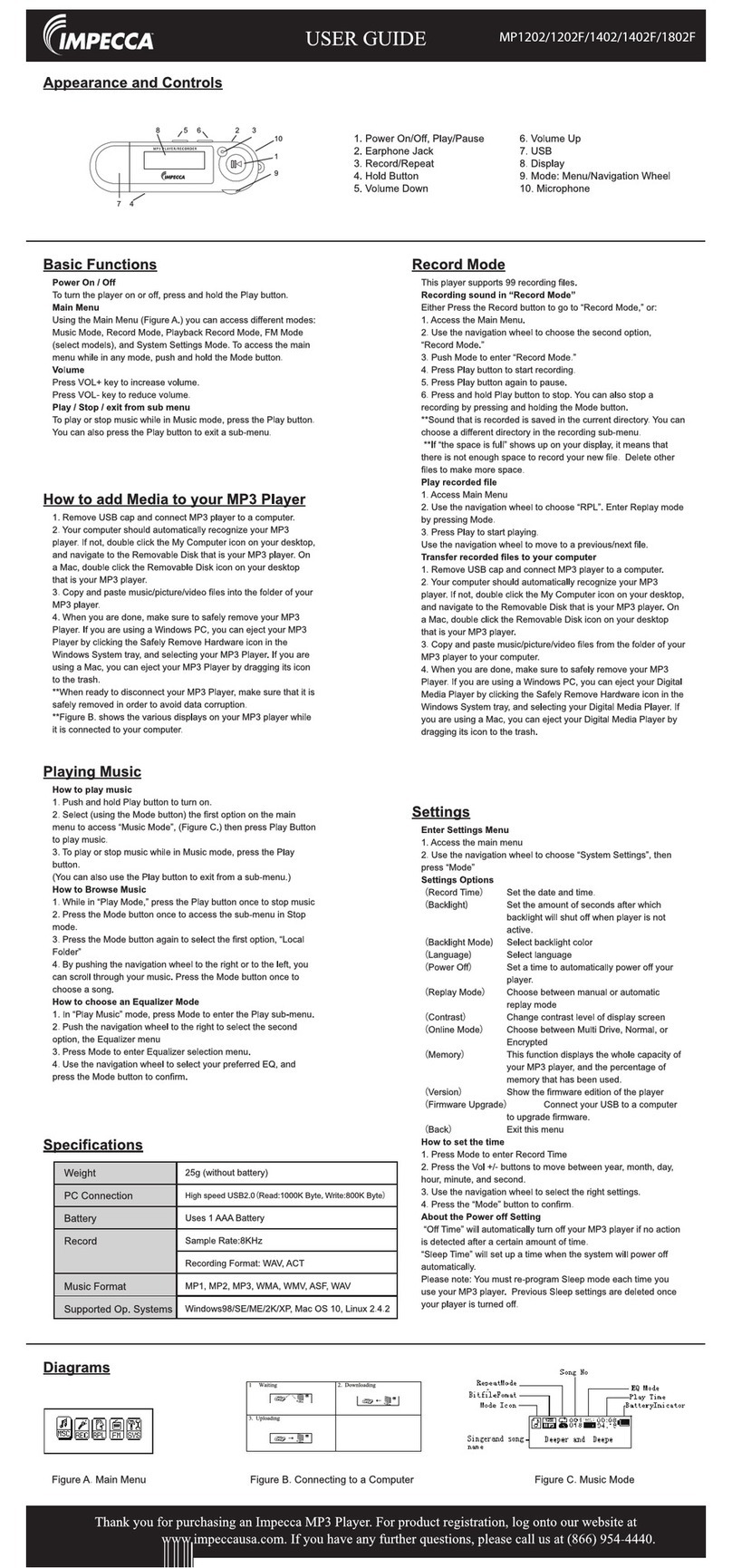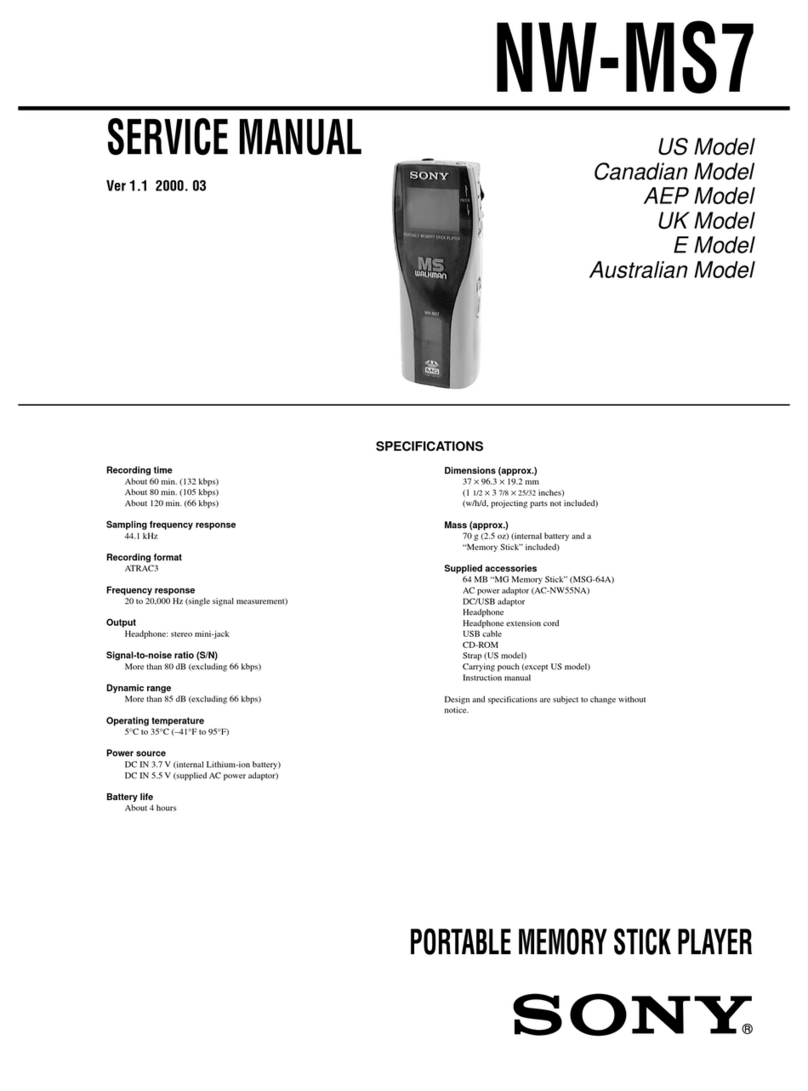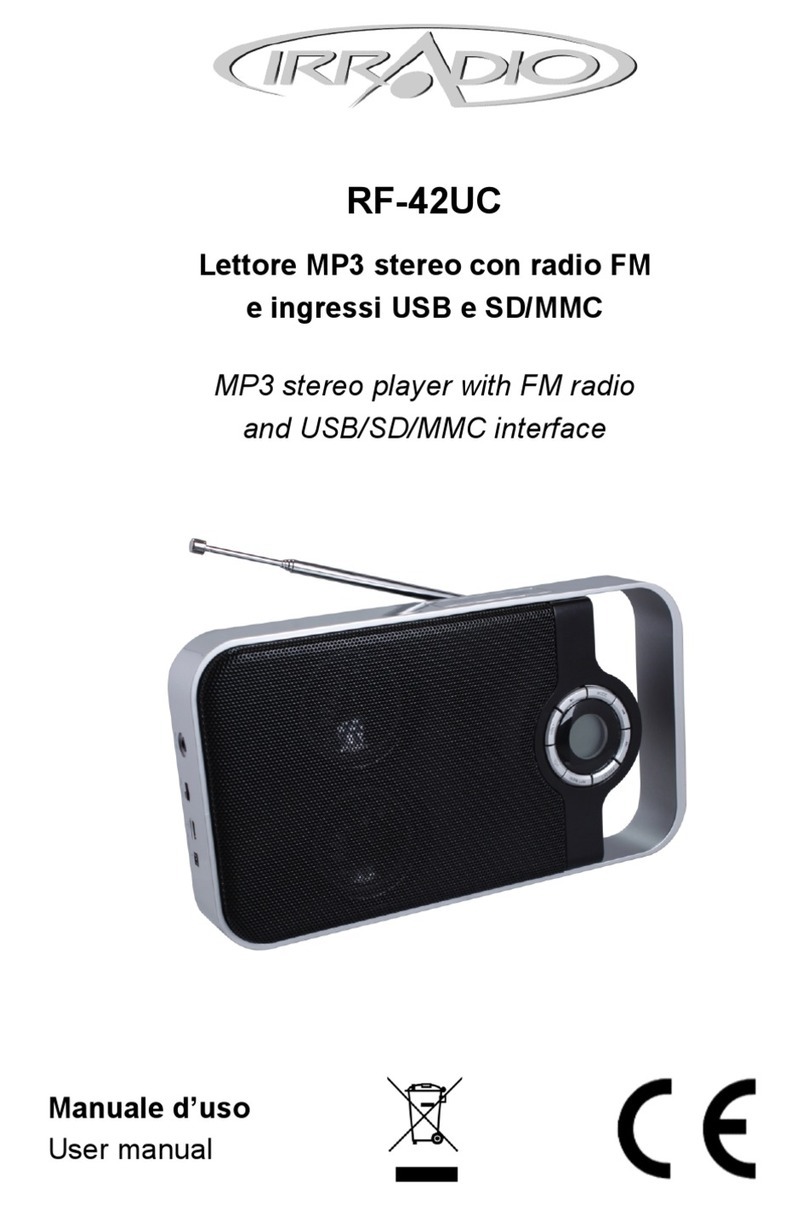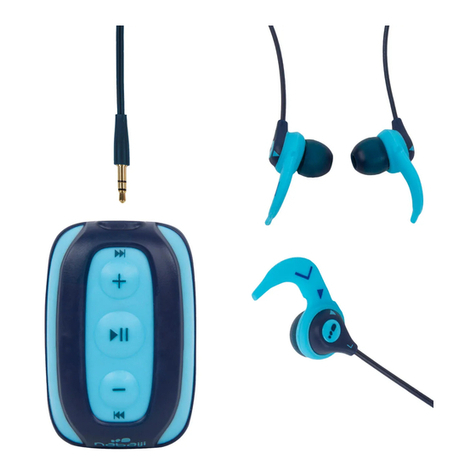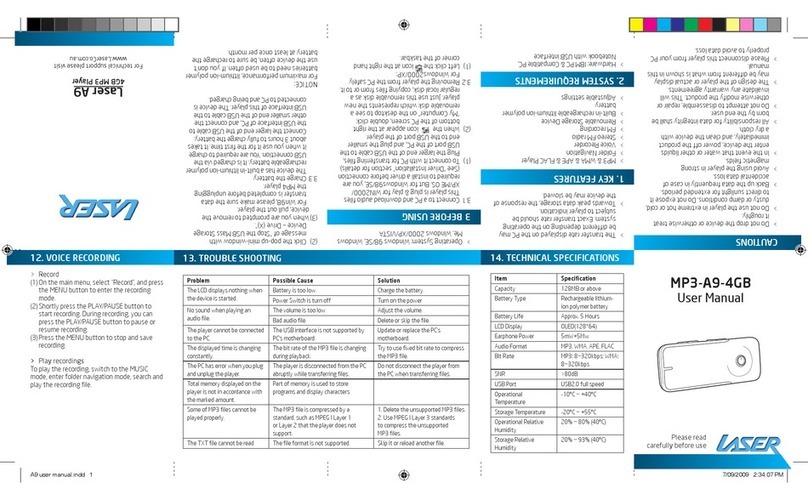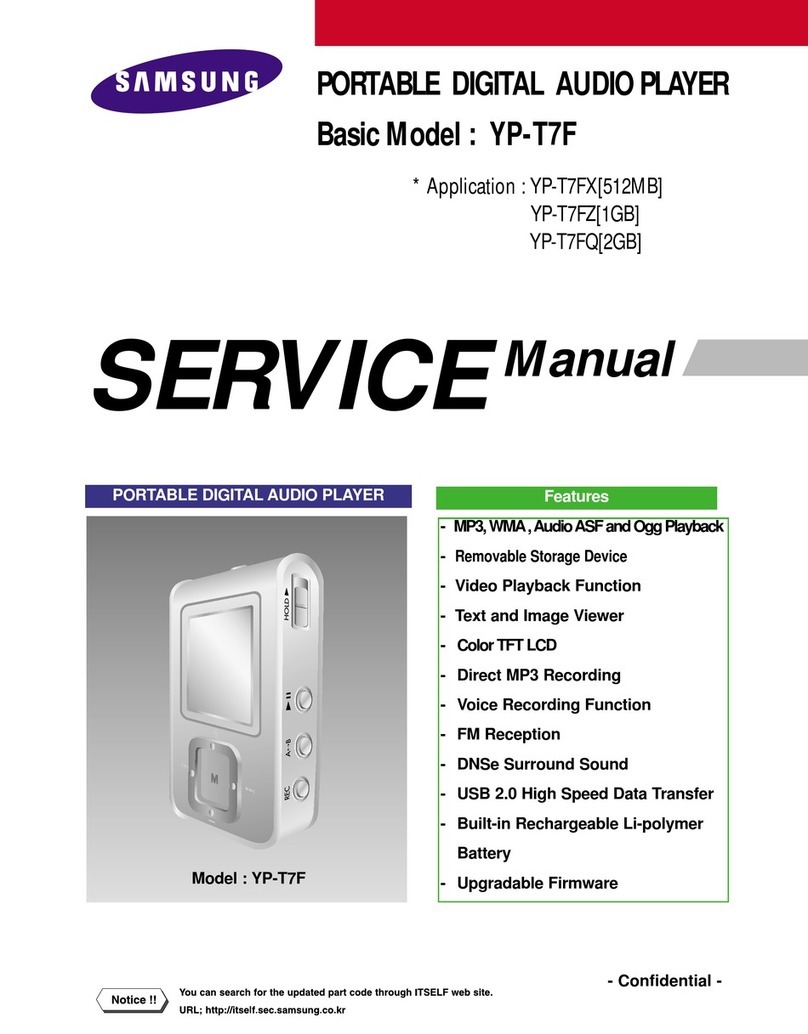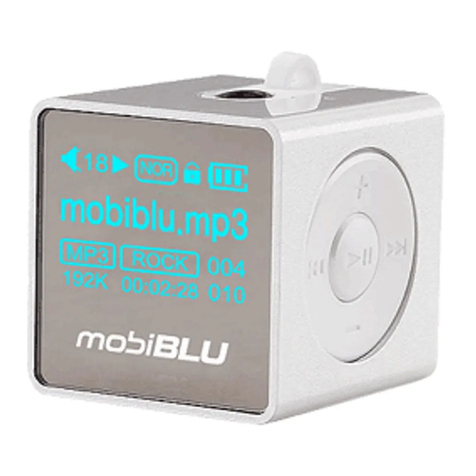Megavoice Herald User manual

Herald User Guide 20180601-10.docx Page 1 of 48
Everything you need to prepare an audio project and load it to the MegaVoice Herald audio player.
Your Audio Project

Herald User Guide 20180601-10.docx Page 2 of 48
Table of Contents
Table of Contents ........................................................................................................................................................ 2
Table of Figures ........................................................................................................................................................... 4
Glossary of terms......................................................................................................................................................... 5
Overview...................................................................................................................................................................... 6
Hardware Requirements ......................................................................................................................................... 6
Software Requirements........................................................................................................................................... 6
Folder Structure........................................................................................................................................................... 7
Structure Flexibility.................................................................................................................................................. 7
Structure Limitations ............................................................................................................................................... 8
Relationship between the Keypad and Folder Structure ........................................................................................ 9
Building the Folder Structure .................................................................................................................................... 11
The Audio Project Folder....................................................................................................................................... 11
Building a Full (3 level) Structure........................................................................................................................... 13
The Section Folders ........................................................................................................................................... 13
The Book Folders and Chapter Files .................................................................................................................. 15
Verifying the Intermediate Folder Structure..................................................................................................... 20
Building the 1 or 2 Level Folder Structure......................................................................................................... 21
Using the File Renaming Utility (optional)............................................................................................................. 22
Loading Audio Files to the Herald ............................................................................................................................. 30
Connecting the Players.......................................................................................................................................... 30
Loading the Audio using SaberCopy...................................................................................................................... 31
Listen to the Message............................................................................................................................................ 37
Loading Audio Files to an SD card ............................................................................................................................. 38
Limitations............................................................................................................................................................. 38
Loading the SD card using SaberCopy ................................................................................................................... 39
Loading the SD card using File Explorer ................................................................................................................ 40
Listen to the message on the SD card ................................................................................................................... 41
The Bookmark............................................................................................................................................................ 42
Setting the Bookmark............................................................................................................................................ 42
Resetting the Bookmark to the beginning............................................................................................................. 42
Warnings and advisories ........................................................................................................................................... 43
MegaVoice limited warranty ..................................................................................................................................... 44

Herald User Guide 20180601-10.docx Page 3 of 48
Technical Support...................................................................................................................................................... 46
Troubleshooting ........................................................................................................................................................ 47
Troubleshooting continued… ................................................................................................................................ 48
Resetting the player .......................................................................................................................................... 48

Herald User Guide 20180601-10.docx Page 4 of 48
Table of Figures
Figure 1: Relationship between the keypad and folder layout..................................................................................... 9
Figure 2: Section/Book control buttons...................................................................................................................... 10
Figure 3: Chapter control buttons............................................................................................................................... 10
Figure 4: Folder layout before/after renaming ........................................................................................................... 29
Figure 5: USB connection diagram .............................................................................................................................. 30
Figure 6: On/Off button............................................................................................................................................... 37
Figure 7: Inserting a microSD card .............................................................................................................................. 38
Figure 8: microSD USB adapter ................................................................................................................................... 40

Herald User Guide 20180601-10.docx Page 5 of 48
Glossary of terms
Term
Description
2-second press
Synonymous with “long press”. Press, hold for 2 seconds and release.
Bookmark
The storing of a setting or audio file playback position for use later.
Charge-only USB cable
A USB cable that can only be used for charging while connected to a computer or other
charging source.
Continuous press
Press and hold until a certain location is reached or the end/beginning.
Data-only USB cable
A USB cable that will allow both transfer of data while connected to a computer as well as
charging of the player.
Firmware
Permanent software programmed into the player’s read-only memory.
HUB or USB HUB
A device that expands a single Universal Serial Bus (USB) port into several so that there
are more ports available to connect devices to a host system. USB hubs are often built
into equipment such as computers, keyboards, monitors, or printers.
LED
“Light-emitting diode” A semiconductor device that emits visible light when an electric
current passes through it. The light is not particularly bright, but in most LEDs it is
monochromatic, occurring at a single wavelength.
Lithium Ion battery
(sometimes Li-ion battery or LIB) A battery that is a member of a family of rechargeable
battery types in which lithium ions move from the negative electrode to the positive
electrode during discharge and back when charging.
Long press
Press, hold for 2 seconds and release.
microSD card
A type of removable flash memory card used for storing information. SD is an abbreviation
of Secure Digital, and microSD cards are the smaller version of SD cards.
MP3
“MPEG (Moving Pictures Experts Group) Layer 3” Audio file format.
N/A
Not applicable.
Onboard memory
Internal memory in the player.
Player
A MegaVoice Herald player.
Powered HUB
A USB HUB that receives its power from direct current rather than the computer via a USB
connection.
Short press
A quick press and release, a “click”.
SLS cable
A special USB data cable (available only from MegaVoice) used for programming
MegaVoice players. The player memory can only be accessed using these cables.
Unit
A MegaVoice Herald player.
USB
“Universal Serial Bus” The most popular connection used to connect a computer to
devices such as digital cameras, printers, scanners, and external hard drives. USB is a
cross-platform technology that is supported by most of the major operating systems.
USB port
A standard cable connection interface for personal computers and consumer electronic
devices.
USB to micro-USB cable
A USB cable with a standard USB connector on one end and a micro-USB connector on the
other.
Volume
In the context of computer operating systems, a volume or logical drive is a single
accessible storage area with a single file system, typically (though not necessarily) resident
on a single partition of a hard disk or other device.
WAV
Standard audio file format created by Microsoft.
WMA
“Windows Media Audio” An audio and audio codec file format.

Herald User Guide 20180601-10.docx Page 6 of 48
Overview
MegaVoice introduces a small digital audio player, the Herald. The Herald is simple and cost effective - ideal for
teaching and training. Its intuitive, raised-button keypad makes navigating hundreds of hours of audio and
Scripture content quick and easy - even for the elderly or blind.
The Herald comes with fixed internal flash memory and a microSDTM card slot, making it simple for your ministry
team to update content and switch between different microSDTM cards. Load over 800 hours of tamperproof
audio content including: the Bible, New Testament, sermons, discipleship training, music, educational or
humanitarian messages, and load your ministry's audio content onto the microSDTM card as needed.
The MegaVoice Herald is designed to be less conspicuous and is powered by 2 AA batteries, making it ideal for
creative access applications. The Herald may be ordered with or without an onboard speaker (located in the
back of the unit). Both versions of the Herald provide a standard 3.5mm stereo earbud jack for personal
listening or can be plugged into the MegaVoice Solar Case Speaker so an entire congregation can hear the
Message.
Hardware Requirements
A Windows PC or Mac (Intel only)
At least 1 USB port (2.0 or higher)
Enough disk space for…
The SaberCopy software program (around 10 MB)
Each of your audio messages
Additional work area for restructuring message folders
At least 1 SLS USB cable with micro-USB connector (available fromMegaVoice)
A powered USB 2.0 hub (optional –for programming multiple playersconcurrently)
Software Requirements
SaberCopy software (provided byMegaVoice)
PC Operating System: Windows 7, 8.x or 10 (SaberCopy will work on XP but is not recommended since XP
is no longer supported)
SaberCopy can work on Mac with certain restrictions (see here for details)
File Renaming Utility (free file renaming utility recommended by MegaVoice)

Herald User Guide 20180601-10.docx Page 7 of 48
Folder Structure
Structure Flexibility
Herald is very flexible in its file structure and supports any of 3 levels of folders and files for organizing your
audio messages:
3 levels: Section folders that contain Book folders that contain Chapters (audiofiles)
2 levels: Book folders that contain Chapters (audio files)
1 level: Chapters only (audio files)
The structure above you choose depends on how many audio files you have, how the messages were divided
into files and how you wish to group them for easiest navigation and playback.
For example, if your messages each span multiple audio files, you may want to treat a message like a Book
where the portions of one message (the individual audio files) are “chapters”.
If you have many messages dealing with the same topic, then the topic could be considered a “section” with
each of the “books” in that section of related messages.
But if your recorded messages are each contained in a single audio file, you could just as easily put them
all together as “chapters only” (a flat structure with all the files in a single folder).
The Herald supports free text for the naming of folders and files. The only restriction is that the names must sort
in the order in which the audio should be played for navigation by the player to work correctly.
To guarantee correct ordering, the names could all be prefixed with a 3-digit number followed by descriptive text
like “001 Healing Part 1.MP3”, “002 Healing Part 2.MP3”, “003 Admonishing.MP3”, “004 Fasting.MP3”, etc.

Herald User Guide 20180601-10.docx Page 8 of 48
Structure Limitations
The limitations for the Herald are as follows:
All audio files must be in MP3, WAV or WMA format. Files in any other audio format will be ignored.
All folder and file names may be in free text; however it is important that the folders and files sort in the
order the Herald should play them.
oFor guaranteed correct play order, MegaVoice recommends using a combination of a 3-digit prefix
followed by free text.
oFor example:
001 New Testament (Section)
001 Book of Matthew (Book)
001 Matthew Chapter 1 (Chapter)
002 Matthew Chapter 2 (Chapter)
Both the onboard memory and microSD card must adhere to one of the following folder structureoptions:
o3 levels (Sections, Books, Chapters):
There must be at least 1 (but not more than 199) Section folders in the audio project (root)folder
There must be at least 1 (but not more than 999) Book folders in each Sectionfolder
There must be at least 1 (but not more than 999) audio (chapter) files in each Bookfolder
The Book folder may not contain sub-folders or files of a type other than MP3, WAV or WMA.
There must not be any empty folders.
o2 levels (Books, Chapters):
There must be at least 1 (but not more than 999) Book folders in the audio project (root) folder
There must be at least 1 (but not more than 999) audio (chapter) files in each Bookfolder
The Book folder may not contain sub-folders or files of a type other thanMP3, WAV or WMA
There must not be any empty folders.
o1 level (Chapters only):
There must be at least 1 (but not more than 999) Chapter (audio) files in the audio project
(root) folder
The Root folder may not contain sub-folders or files of a type other thanMP3, WAV or WMA.

Herald User Guide 20180601-10.docx Page 9 of 48
Relationship between the Keypad and Folder Structure
The Herald offers convenient navigation through hundreds of audio files. In order for this navigation to
work, you need to decide how you want your files to be partitioned.
Let’s get to know the Herald keypad and how the navigation buttons correlate to the required folder
structure.
This button scrolls backward
through the
Books and
Sections. A click skips 1 Book
while a 2-second press skips
1 Section.
This button scrolls forward
through the
Books and
Sections.
A click skips 1
Book while a 2-second press
skips 1 Section.
A click on this button skips
backward 1
Chapter (audio)
file
in the current Book. A
continuous press will fast-
reverse until the button is
released.
A click on this button skips
forward 1
Chapter (audio)
file
in the current Book. A
continuous press will fast-
forward until the button is
released.
This button controls
pause, resume and
setting the bookmark.
This button controls volume. There are
6 preset levels.
Each click increases volume by 1 level
until the maximum and then returns to
the minimum setting.
Figure 1: Relationship between the keypad and folder layout

Herald User Guide 20180601-10.docx Page 10 of 48
For those of you who are familiar with MP3 players or smart phones, it may be helpful to consider how we organize
our music: Artists, Albums and Songs.
We group our songs in albums and the albums are grouped per artist. We have a very similar structure for the
files on the Herald! Audio files are grouped into “Books” and Books are grouped into “Sections”.
A typical Bible from the MegaVoice Audio Library is divided into 3 Sections in the following way:
•001
Genesis through Job
18 “Books”
•002
Psalms through Malachi
21 “Books”
•003
Matthew through Revelation
27 “Books”
Each Section may contain one or more “Books”. The upper set of double-arrow buttons controls
forward/reverse navigation among the Books and Sections.
Each Book may contain one or more “Chapters”. The bottom set of double-arrow buttons control forward and
reverse navigation through the Chapters.
A click on these buttons will scroll
to the previous/next Chapter in the
current Book.
A continuous press will fast
reverse/forward through the
current Chapter until the button is
released or the beginning/end of
the chapter is reached.
A click on these buttons will
scroll to the previous/next Book
in the current Section.
A 2-second press will scroll to
the previous/next Section in the
audio project.
Figure 2: Section/Book control buttons
Figure 3: Chapter control buttons

Herald User Guide 20180601-10.docx Page 11 of 48
Building the Folder Structure
The Audio Project Folder
Let’s use the following example and create a full (3 level) file structure for distribution on the Herald.
We have sets of Audio Bibles in different languages, but the structure is such that all the audio files for each Bible
are together in a single folder. The individual audio files are named so that they are easily recognizable and sort in
the order in which they should be played but that is the extent of the organization. (Your audio messages may be
organized differently.)
We have a folder named “Audio Bibles”. Within that folder we have 3 Bibles each in a folder of its own: a Dutch
New Testament (Dutch-NT), an English New Testament of the KJV translation (English-NT-KJV) and a Spanish
New Testament (Spanish-NT).
Within each Bible folder are all the relevant audio files (MP3, WAV or WMA), which are Chapters of the various
Books. To keep the files in proper playing order within the single folder, our naming convention is:
BibleName-BookNumber-BookName-ChapterNumber
Let’s take the English-NT-KJV audio message and prepare it for the Herald. In order to keep the example simple,
please note that only select Book and Chapter files appear. We have the first 3 Chapters of the Books Matthew,
Mark, 1 Corinthians, 2 Corinthians, Jude and Revelation.

Herald User Guide 20180601-10.docx Page 12 of 48
In order to load the Herald with an audio project, it may be necessary to rename and/or reorganize the
folders. Before you begin making changes to your Audio Project Folder, MegaVoice recommends that you make
a copy of your project folder and make changes to the copy to keep your original folder intact. Then use the
copy for loading the players.
So let’s create a new folder within our Audio Bibles folder and name it “MegaVoice”. From this point on, we will
refer to the MegaVoice folder as the Audio Project Folder. We’ll copy the contents of the English-NT-KJV folder
into it and make our changes there.

Herald User Guide 20180601-10.docx Page 13 of 48
Building a Full (3 level) Structure
The Section Folders
Open the “MegaVoice” folder. Now we decide how we want to group our “Books” into Sections. In this example,
we have only 6 Books: Matthew, Mark, 1 Corinthians, 2 Corinthians, Jude and Revelation. We want 3 Sections
where the first contains Matthew and Mark, the second contains 1 and 2 Corinthians and the third contains Jude
and Revelation.
In the “MegaVoice” folder, let’s create the following Section folders: “001-Section-Matthew-Mark”, ”002-
Section-1-and-2-Cor” and “003-Section-Jude-Rev”.

Herald User Guide 20180601-10.docx Page 14 of 48
Once our Section folders are created, let’s move corresponding audio files to their respective Section folder.
There are several ways to do this. Use the method you are most comfortable with.
Highlight all the audio files, right-click and choose “Cut”, open the “001-Section-Matthew-Mark” folder,
right-click and choose “Paste”.
Highlight all the audio files and then “drag” them to the “001-Section-Matthew-Mark” folder and “drop”
them.
Move all the Chapter (audio) files for Matthew and Mark to the “001-Section-Matthew-Mark” folder. Move all
the Chapter files for 1 and 2 Corinthians to ”002-Section-1-and-2-Cor”. Move all the Chapter files for Jude and
Revelation to “003-Section-Jude-Rev”.
Once you do this, all that the “MegaVoice” folder should contain are the three Section folders.

Herald User Guide 20180601-10.docx Page 15 of 48
The Book Folders and Chapter Files
Now we will create “Book” folders in each of the three Section folders. Open the first Section folder, “001-
Section-Matthew-Mark”. Since Matthew is the first Book, create a folder named “001-Matthew”. Mark, being
the second Book, will need a folder named “002-Mark”.
Now we will move the Chapter files to their respective “Book” folders. Highlight the Chapter files for Matthew (3
of them in our example) and move them to the “001-Matthew” folder.

Herald User Guide 20180601-10.docx Page 16 of 48
Highlight the Chapter files for Mark (3 of them) and move them to the “002-Mark” folder.
Let’s repeat the above process for the next Section, “002-Section-1-and-2-Cor”. Because 1 Corinthians is the first
Book in this Section, create folder “001-1-Corinthians”. And create “002-2-Corinthians” for the second Book.

Herald User Guide 20180601-10.docx Page 17 of 48
Again we will move the Chapter files to their respective “Book” folders. Highlight the Chapter files for 1
Corinthians (3 of them in our example) and move them to the “001-1-Corinthians” folder.
Highlight the Chapter files for 2 Corinthians (3 of them) and move them to the “002-2-Corinthians” folder.

Herald User Guide 20180601-10.docx Page 18 of 48
And finally, repeat the process for the third Section, “003-Section-Jude-Rev”. Open the folder and create a Book
folder for Jude, “001-Jude” and create a folder for Revelation, “002-Revelation”.

Herald User Guide 20180601-10.docx Page 19 of 48
Let’s move the Chapter files to their respective “Book” folders for Section 3. Highlight the (only) Chapter file for
Jude and move it to the “001-Jude” folder.
Highlight the Chapter files for Revelation (3 of them) and move them to the “002-Revelation” folder.

Herald User Guide 20180601-10.docx Page 20 of 48
Verifying the Intermediate Folder Structure
Let’s verify what we have so far. Using names that were a combination of the required 3-digit sequence number
and a meaningful name should make this easy.
Within our Audio Project Folder “MegaVoice” we should have our three Section folders.
Within each Section folder, we should only have Book folders and they should be the Books relevant to that
particular Section.
Within each Book folder we should have the relevant Chapter (audio) files for that Book. Remember that for the
3 level structure, the Book folders are the only place in the Audio Project Folder where audio files are present.
Table of contents
